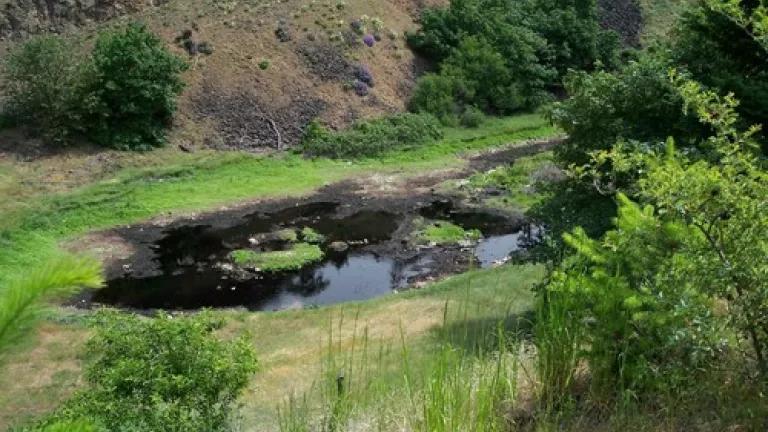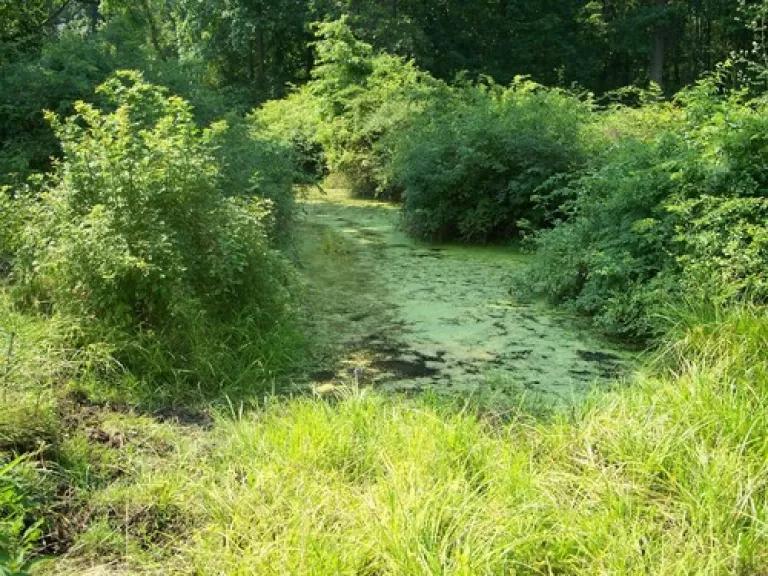Breaking: New Research Confirms Wetlands Are Connected to Other Waters, but Senate May Vote Tomorrow to Ignore Science

The Houston Chronicle reported Monday that scientists at Texas A&M University have shown that prairie wetlands that lack apparent surface connections to other water bodies actually are significantly connected to navigable waterways. The Chronicle states:
The study, to be published in the journal Wetlands, shows that at least 17 percent of the water that fell on these inland ponds — also known as "prairie potholes" - reached a navigable waterway over a four-year period.
This likely doesn't surprise many folks. Water bodies are interconnected parts of the aquatic ecosystem, and few waters are truly "isolated" from one another. Wetlands in particular help recharge groundwater supplies, serve as critical habitat for aquatic organisms, mitigate flooding, and filter pollutants from our water bodies.
So, whether it's the pool above, located uphill and over a ridge from the Columbia River, or the marsh area below, located across a field from the West Branch of Perkiomen Creek in Berks County, Pennsylvania, even apparently distinct water bodies are commonly part of a larger system in which water and other things (pollution, for one) move.

But even if this new research is unsurprising, it's critically important. That's because the Supreme Court -- a panel not known for its expertise in ecology or hydrology -- has issued a pair of decisions over the past decade that introduced a number of unscientific concepts into the fundamental question of what water bodies are protected by the Clean Water Act's pollution control and cleanup programs.
Because of these decisions, for instance, there has been a lot of focus on so-called "isolated" waters, ones that lack obvious surface connections to other waters. Over the last 10 years, "isolated" intrastate wetlands effectively have been denied protection under the law; the Environmental Protection Agency and the Army Corps of Engineers have essentially acted as though these waters have no relevance to others. This is a big deal; an estimated 20 percent of the approximately 100 million acres of wetlands in the lower 48 states are "isolated."
So, this new research helps establish that "isolated" waters really do have an important relationship to other water bodies, including navigable ones. Under the Supreme Court's new water lingo, a water can be protected if it has a "significant nexus" with a navigable water; studies like these will help demonstrate that such a relationship exists, and allow the agencies to protect such waters using the Clean Water Act's pollution tools.
Well, maybe. As I said, the government has been ignoring these kinds of waters for the last decade. To a large degree, this approach is because of interpretations of the Supreme Court's decisions that the Bush administration put out, not commands in the decisions themselves. These "guidance documents" have unduly limited the kinds of features that the agencies will seek to protect, so a clarification of the law -- by revised guidance and by a follow-on rulemaking -- is needed to better reflect the science in the law.
But, as I reported a couple weeks ago, the House of Representatives recently voted to put a halt to the administration's efforts to overhaul its guidance and rules -- an action that would freeze in place the current unscientific status quo. Tomorrow, the Senate will take up the spending bill containing this see-no-water provision, along with a host of anti-environmental riders that make this bill perhaps the single biggest assault on health and environmental protections the Congress has ever considered.
Please take a minute to contact your Senator and tell him or her to oppose H.R. 1 and its anti-environment attacks. Wetlands and the other important waters they help sustain need your help.

